(Click on the player at the top to listen to this ten-minute episode)
What follows is the weekly column we email every Friday that is a companion to this weekly podcast.
With the recent record warmth in Wisconsin we took advantage of the weather and went for a long hike last Saturday. One of the highlights of our walk was pausing on an old wooden bridge to watch the water flowing under our feet. Observing silently for an extended time, we noticed how often our view changed. We saw many different sizes and shapes of sticks floating by, along with various sizes and shapes of dried leaves. Occasionally, a piece of recently freed ice drifted into view as well. And between the multiple objects floating by, there were long stretches of crystal clear water.
Our experience reminded us of a concept we often teach people who are having trouble with experiencing anxious thoughts. And who among us doesn't struggle with anxious thoughts at times?
We teach that it is helpful to think of each of us having an "experiencing self" and an "observing self." When we experience anxious thoughts, as the phrase "experience anxious thoughts" makes evident, our experiencing self is having those thoughts and feelings. When we pause and notice that we have been having many worried thoughts, it is our observing self that is doing the noticing. Other examples might be when we see that we have been irritable and overly reactive. Or when we notice that we have been eating poorly when stressed. Or when we notice that we go shopping to take our mind off things troubling us. That is our observing self doing the noticing.
Returning to the scene of our watching the flow of the stream on our recent hike, that was our observing selves standing on the bridge and watching what went by. We were merely observing what was happening in front of us.
The flow of the stream can be compared to our experiencing selves, literally experiencing the flow of our thoughts and feelings and all that comes with that. Sometimes, there is lots of debris floating by; other times, the water is crystal clear.
Just as a person has no control over what floats by in the stream, we often have little control over what floats through our minds at any given time, nor what feelings come along. What we do have control over is our capacity to get up on the bridge, and to access our observing self. This is particularly helpful when we are feeling overwhelmed with thoughts or emotions. If we can let ourselves adopt the perspective that these things will naturally float on by with time, and we needn't be swept along by them, we will feel in better control.
Here are some real-life examples of how this can help. A parent is exasperated by their teen and about to lose control. Instead of losing control, they realize that they need to call a time-out and tell their teen that they need to go for a walk to calm down. They can resume their conversation later. The parent has used their observing self to notice their experiencing self becoming overwhelmed. They then made an excellent call to calm the river of their emotions before continuing the conversation. The observing self helped the experiencing self gain perspective and calm down.
Imagine receiving an email or text message that irritates you. Your experiencing self may want to send an angry reply immediately. Fortunately, you can intentionally climb up on the bridge. Then you can have your observing self help you to make the decision to respond in a few hours, or even the next day, when you are not so emotionally flooded. Responding from your observing self will undoubtedly be much more productive.
Some practices we can use to strengthen our observing self include meditation, prayer, mindfulness, journaling, talking to trusted friends, or talking to a therapist. Strengthening our ability to step out of the river of thoughts and feelings and onto the bridge of the observing self is a sure way to enhance our personal wellness and the wellbeing of our relationships.
Sign up for Your Weekly Wellness Compass to receive weekly an email each week that announces when a new podcast episode has been released and also includes a transcription of the episode for those who prefer to read instead of listen. Each episode is designed to help you for navigate your week ahead with clear attention and intention.
ABOUT THE CREATORS:
Holly Hughes Stoner, LMFT and Scott Stoner, LMFT, are both licensed marriage and family therapists who are partners in life and in work. They are the Co-Directors and Co-Creators of the Wellness Compass Initiative, a non-profit initiative that crates preventative wellness materials for adults, families, and teens. They live in Madison, Wisconsin and are the parents of three adult children and are blessed with two grandchildren, as well.


